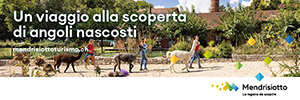Castles of Bellinzona
Cities & Monuments
The castles of Bellinzona are one of Ticino's main attractions and, with the old walls that are still standing, represent the sole medieval military complex in the Alpine region. They became part of the UNESCO World Heritage in 2000. A visit to the castles, also connected by a tourist train, is like diving into history: an excursion enjoyed by all ages thanks to the splendor of the fortifications with their high towers and crenulated walls. Of interest is also the walk inside Bellinzona's historic centre, especially on Saturdays, market day. Audio guides are also available.
Bellinzona's strategic position at the crossroads of the alpine routes connecting the North to the South (Gotthard, Lukmanier, San Bernardino, Nufenen) is the reason why around the year 400 an important defensive project with three castles, towers and city walls was built. The Dukes of Milan were the ones to block the valley of the River Ticino. It was meant to impede the Swiss Confederates from gaining ground in the South. This passage, at the valley's narrowing point, is the only access to the North.
The visit
Castelgrande
To access the first castle, Castelgrande, you may take the elevator from the Piazza del Sole or on foot by going up the alleys that begin in the city's historic centre in the vicinity of the Collegiata. This castle, like the others, is also accessible with the little tourist train that leaves from the Piazza Collegiata. Castelgrande, that in the 80s and 90s was subject to an accurate restoration directed by the architect Aurelio Galfettti, is equipped with two high towers and crenulated walls that are partially accessible on foot. It houses a museum illustrating the history of the city as well as temporary exhibits, and a good restaurant managed by the Canton Ticino Tourism School.
The site on which Castelgrande stands is rich in history and archaeological findings unearthed during excavations in 1984-85 confirm that the site was inhabited as far back as the Neolithic period (5500-5000 B.C.) and date back to Roman times. Excavations in 1967 brought to light evidence of the first fortification from the 4th century A.C. Documents dating from the 6th century. also mention the existence of this first defensive construction. The castle as we see it today was built in various stages and has undergone several restorations. The castle construction began in the 13th century; it was enlarged in 1473-86 and later restored in the 17th and 19th centuries. The White and Black Tower date from the 13th and 14th centuries and are respectiverly 27 and 28 meters high.
Architect Mr. Aurelio Galfetti carried out the latest extensive restorations in 1984-1991. The inner courtyard, the entrances, the elevator and the steps leading down to the town center are a stunning exemplification of the castle’s transformation.
The battlements are divided into three sections, one of which still descends right into the town center. At the time of the Visconti, this remaining bulwark reached down as far as the river Ticino. It was built in the late 14th century and fortified by the Sforza dukes of Milan between 1486 and 1489. In 1515 parts of the wall were destroyed by a terrible flood.
The elengance of the 27-metre-high White Tower (1250-1350) and the impressiveness of the 28-metre-high Black Tower (1310) are also worth mentioning. In the Black Tower you can play with an amusing "Escape Room" dedicated to the Rabadan Carnival, Bellinzona's historic event, which is one of Switzerland's largest carnival events.
Montebello
From Castelgrande you can reach the castle of Montebello, located on the opposite hill, by descending the stairway leading to Piazza Collegiata and ascending the alley adjacent the namesake church. This castle also houses a history and archaeology museum.
Montebello is the name of the hill on which the castle stands, 90 meters above Castelgrande. The defensive walls of the old town originate here and join up with those from San Michele hill. There are still parts of both branches of these walls protecting the north and south sides of the fortress. The internal nucleus of the castle dates back to the 13th/14th century and has been restored several times.
Most probably, it was built by the Rusca family of Como who kept it for a long period of time, even during the rule of the Viscontis. The external courtyards with the towers and the "Rivellino" were built by Sforza-engineers in the second half of the 15th century During Swiss occupation, the castle was called Castello di Svitto but it was renamed Castello di San Martino when Ticino became an independent canton. Towards the end of the 18th century, the castle was acquired by the Ghiringhelli family who ceded it to the Canton in 1903 on the occasion of the first centenary of independence.
Inside this castle, an interesting archeological itinerary (Archeologia Montebello), allows you to retrace the history of the medieval manor, accompanied by a guide in four languages to be downloaded on smartphone.
Sasso Corbaro
The third castle, Sasso Corbaro, dominates the city from above enjoying a spectacular view. It can be reached both from Montebello by following the stretches of trails through the vineyards and the stretches of road, accessible also by car. It houses exhibition halls and an excellent restaurant.
The Sforzas built the third castle, called Sasso Corbaro after the hill on which it stands, in 1479 after the defeat of the Milanese troops at the Battle of Giornico. It was designed and completed in the incredibly brief time of 6 months by the military engineer Benedetto Ferrini of Florence who died of the plague shortly before its completion. Its dominant position, 230 meters above the town, meant better protection of the Ticino Valley. The Castle, starkly geometrical in shape, stands in a square courtyard enclosed by high walls which are as much as 7 meters thick at the point where they join the keep on the northern side. In the square courtyard enclosed by high walls is the donjon (or keep) with its mighty walls reaching 7 metres in thickness.
The lookout tower on the southern side is still almost intact. During early Swiss occupation, the castle was known as the Castle of Unterwalden but was renamed Castle of Santa Barbara in 1818. Today it is called Sasso Corbaro or Castello di Cima.
It was abandoned in 1798 and started to deteriorate. It would have fallen into complete disrepair had the Canton not interceded in 1870, handing it over to an organization, which planned to turn it into a hotel, and later to three Bellinzona-families who transformed it into a summer residence. In 1919, the state regained possession of the castle and began a restoration that included the rebuilding of the "Rivellino" (or outer courtyard), the entrance gates, the 17th century chapel and the well.
(Bellinzona Turismo)

 Back to the list
Back to the list





